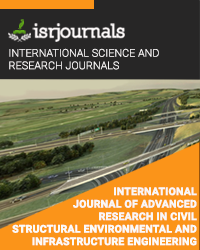review of optimization methods for aggregate blending
Priyansh Singh,Gurpreet Singh Walia
Published in International Journal of Advanced Research in Civil,Structural,Environmental and Infrastructure Engineering and Developing
ISSN: 2320-723X Impact Factor:1.7 Volume:1 Issue:3 Year: 25 April,2014 Pages:1-9

Abstract
The aggregates for asphalt mix has to be selected from various stockpiles to match the specified gradation requirements. The fraction of various aggregates which give the desired aggregate gradation is very important to insure quality mix. Previously this fraction is determined by graphical and trial & error method. But due to present need, mix requires more sizes of aggregate which is not computable from these traditional methods. Many optimization techniques are now available which can be used for aggregate blending. These methods can seamlessly use to optimize the either specification requirement or cost minimization or both simultaneously. Here in this paper more scientific and mathematical optimization approaches are presented which can accurately answer these problems.
Kewords
Aggregate blending, Proportioning, Asphalt mixes, Optimization, Linear programing, Quadratic Linear Programing, Genetic algorithm etc...
Reference
[1] M. G. Spangler, Soil Engineering, 2nd ed. Scranton, Pa: International Textbook Company, 1960, p. 217. [2] Asphalt Institute, Mix Design Methods for Asphalt Concrete and Other Hot-Mix Types, Manual Ser. The Asphalt Institute, 1962. [3] D. L. Neumann, “Mathematical Method for Blending Aggregates,” J. Constr. Div. ASCE, vol. 90, no. 2, pp. 1–13, 1964. [4] J. B. Ritter and L. R. Shaffer, “Blending Natural Earth Deposits for Least Cost,” J. Constr. Div. ASCE, vol. 87, no. 1, pp. 39–61, 1961. [5] H. Sivilevičius, V. Podvezko, and S. Vakrinienė, “The use of constrained and unconstrained optimization models in gradation design of hot mix asphalt mixture,” Constr. Build. Mater., vol. 25, no. 1, pp. 115–122, Jan. 2011. [6] K. Awuah-Offei and H. Askari-Nasab, “Aggregate Cost Minimization in Hot-Mix Asphalt Design,” Journal of Materials in Civil Engineering, no. May, pp. 554–561, 2010. [7] W. Vavrik, W. Pine, and S. Carpenter, “Aggregate blending for asphalt mix design: Bailey method,” Transportation Research Record: Journal of the Transportation Research Board, no. 02, pp. 146–153, 2002. [8] V. Aurilio, W. Pine, and P. Lum, “The Bailey Method Achieving Volumetrics and HMA Compactability,” Proceedings of The Annual Conference-Canadian Technical Asphalt Association, 2005. [9] S. Easa and E. Can, “Optimization model for aggregate blending,” Journal of construction engineering and management, vol. I, no. 3, pp. 216–230, 1985. [10] S. Easa and E. Can, “Stochastic priority model for aggregate blending,” Journal of construction engineering and management, vol. I, no. 4, 1985. [11] P. Venkataraman, Applied Optimization, 2nd ed. New Jersey: Jhon Wiley & Sons, 2009, p. 204. [12] A. Ravindran and H. Lee, “Computer Experiments on Qudratic Programing Algorithms,” Eur. J. Oprational Res., vol. 8, no. 2, pp. 166–174, 1982. [13] Wikipedia Contributors, “Charles Darwin,” Wikipedia, The Free Encyclopedia, 2013. [Online]. Available: http://en.wikipedia.org/w/index.php?title=Charles_Darwin&oldid=579342633. [Accessed: 19-Oct-2013]. [14] Y. Toklu, “Aggregate blending using genetic algorithms,” Computer-Aided Civil and Infrastructure Engineering, vol. 20, pp. 450–460, 2005. [15] D. E. Goldberg, Genetic Algorithms in Search, Optimization, and Machine Learning. New York: Addison-Wesley, 1989.

